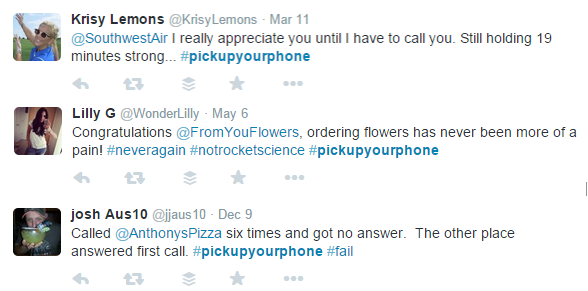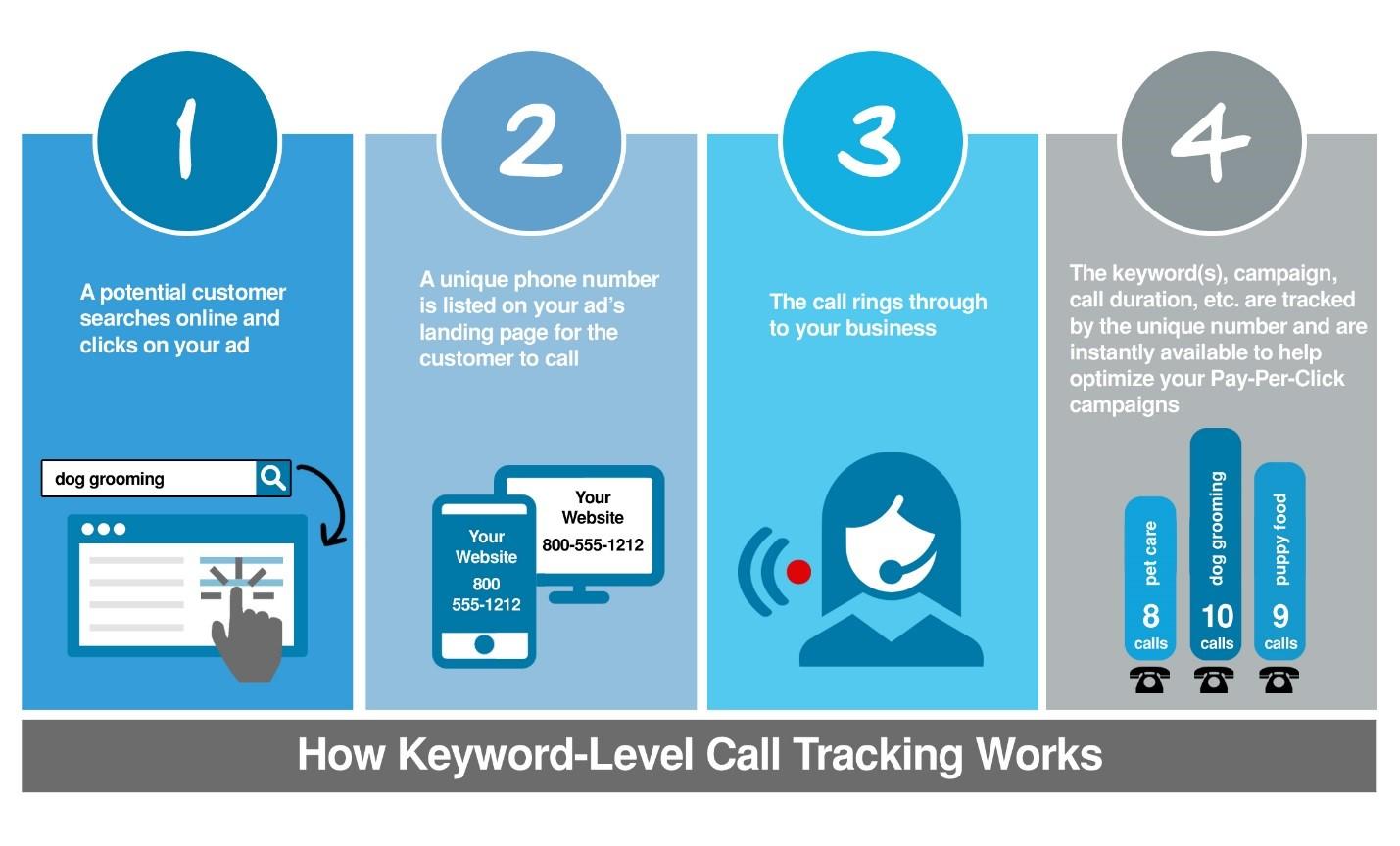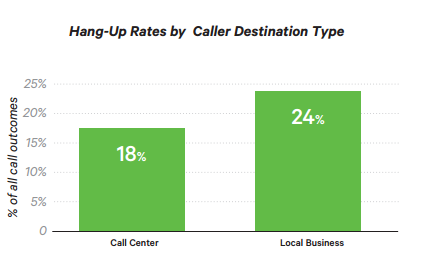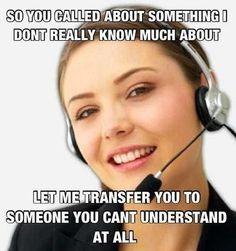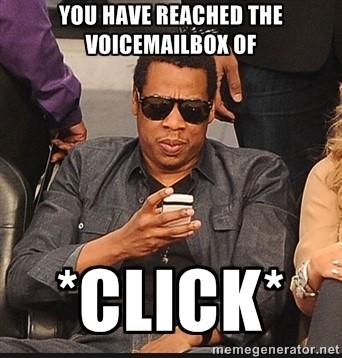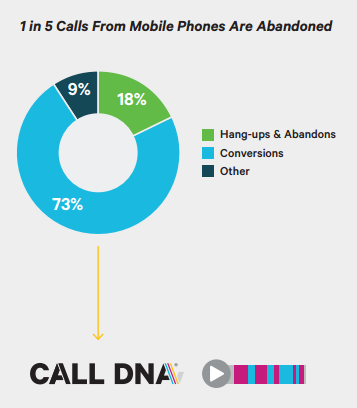
Last week, Marchex released a comprehensive study analyzing mobile click-to-call performance. It married Marchex, Google and BIA/Kelsey data to assess the state of the mobile marketplace today and provide projections for the future. As I read it, one stat in particular stood out: A full 20% (on in five!!) of calls from mobile phones are abandoned.
As a PPC marketer who is a huge proponent of promoting calls through mobile ads, I was really discouraged to learn that so many mobile calls end in a hang-up. However, I quickly recognized the silver lining. Unlike most PPC challenges, this isn’t a complex, unsolvable issue. If you take measures to treat callers well (eliminate long hold times, make it easy to connect with the right department, and pick up the dang phone!), your call abandon rates will diminish in no time.
Step 1: Recognizing that You Have a Call Abandonment Problem
Unless you’re a data junkie, you probably don’t realize just how big an issue call abandonment is for your business. Use these tips to identify whether or not you’re missing out on valuable calls:
Put Yourself Through the Ringer (Literally!)
One of the best ways to understand your caller’s experience is to do a test run of your own. Call your business and consider:
- How many rings does it take before the phone is answered?
- How many hoops do you need to jump through before you can speak with the right department?
- Did you get put on hold? If so, how long was the wait? Did the music drive you nuts?
- Did you make it all the way to the answering machine? Do you even have an answering machine? If so, was the message informative and compelling?
Not only is this a good exercise to conduct on your own, I also recommend asking a neutral, third party to give it a shot and offer their honest feedback. Run these tests often, at various times of day with various subjects. You’ll be amazed at what you find when you put yourself in your prospects’ shoes.
Listen (and React) to Caller Feedback
When callers are frustrated with their phone experience, they’re rarely shy about it. Although most people probably grumble to their spouses or coworkers, a handful take their grievances public with social media. Monitor your social mentions religiously. Even if just one person is complaining about long hold times, egregious customer service, never ending ring cycles or crappy IVRs, it’s critical that you investigate the issue and take action. Just think—for every one person that complains publically, it’s likely that a number of others had the exact same experience.
Invest in Call Tracking
This is a great way to understand what ads are driving phone calls, attain caller details and gain insight to the outcome of the call. A PPC call tracking solution can records PPC driven calls (including those that are unanswered) so you can dive in and explore the caller experience, including reasons for call abandonment. For example, one WordStream client was bidding on competitors’ branded terms. When callers mentioned the competitor by phone, his receptionist was redirecting them to the competitor’s business!
Step 2: Eliminate Call Abandonment
Recognizing the problem is only the first step, now you need to take action. I recommend a two pronged approach—combat it from a technical perspective by adjusting your paid search settings and from a business perspective by optimizing the team responsible for answering incoming phone calls.
Here are a few PPC-based factors to take into account:
Review Your Language Targeting Settings
Imagine doing a search online in English, reading an ad in English and then clicking through to call the business…only to find out that the entire call center staff only speaks Spanish. No matter how excited you might be able their product, chances are you’d hang up the moment you realized that you couldn’t communicate with the receptionist. Bummer, right? This is actually an incredibly common issue that many advertisers are subjecting themselves to. To avoid it, ensure that you are segmenting your campaigns by language and only enabling call extensions for callers that speak the languages you support.
Schedule Your Call Extensions Wisely
Are your phones staffed 24-7? If not, it’s likely that many of your unanswered calls result in hang ups. Use advanced scheduling options to ensure that your call extensions only appear when someone is in the office and available to answer incoming calls. In AdWords, you can designate a custom schedule, complete with times and dates. If you’re using Call Only Campaigns, I recommend using day-parting to ensure your ads are only showing during office hours.
(Image Source: AdWords)
Prioritize Calls from High Intent Ad Groups
If you know a searcher is highly engaged with your brand and ready to make a purchase, they should be your top-priority. If you can only handle a limited number of callers, bump up your mobile bid modifiers for ad groups with high commercial intent keywords to ensure that your ad rank is high and your call extension details appear for them. Use lower bid adjustments for ad groups targeting those in “research mode”. Moreover, remember that high-intent visitors are more likely to “stick it out” on hold than someone who is solely in research-mode.
Making changes to your PPC strategy is only half the battle. I also recommend ensuring that your company is prepared to handle phone inquiries by taking the following steps:
Designate a Team to Handle Incoming Calls
(Image Source: 2015 Click-To-Call Commerce Mobile Performance Report, Marchex)
As you can see in the graph above, callers hang up more frequently when calling a local business than a company with a dedicated call center. Why? It’s likely that call centers are more in-tune with the caller experience and have employees that are trained specifically to handle answer their phones. While it may be infeasible for small, local businesses to create a call center, the takeaway here is that they should have a least one staff member responsible for answering incoming calls.
Train Your Staff
This is huge. In fact, I’ll go as far as to say that call center staff training is the landing page optimization of mobile. PPC advertisers take painstaking efforts to optimize their desktop landing pages to prevent clickers from bouncing. We should be applying the same strategy to mobile campaigns. However, if the primary conversion goal is a phone call, our efforts should be directed to training the team responsible for picking up the phone. These employees should be well informed about your product offerings and policies, be well versed in sales techniques and have a solid understanding about your call goals.
Utilize Call Data to Incentivize Employees
You probably have aggressive goals to improve the number of calls handled per rep, average handling time, etc. Encourage your workforce to strive for these goals by using call metrics to drive bonus packages, promotions or SPIFs.
Hire Based on Call Volume
As you attain data on your incoming call volume and estimated time per conversation, build a model to help you understand when you need to hire new employees. Don’t forget to take training time into consideration. If it takes 2 months to get a new call center representative up to speed, be sure to make hires early on in preparation for an uptick in call volume.
Once you’ve devised your model, stick with it! According to Marchex, appropriate staffing in call centers can improve overall ROI by a minimum of 10%.
Optimize Your Hold Experience
It may be unrealistic for you eliminating the hold process altogether, but you can certainly make an effort to make it less painful for callers. Some clever options include announcing estimated hold times or queue positions (provided they are fairly low) to give users a sense of how long it will be until their calls are addressed, offering “call back” services or getting creative with your music choices. Of course, you will want to test each of these options to determine how they work with your audience.
Revamp Your Voicemail Process
Letting your hard-earned leads wind up with your answering machine is certainly not ideal. However, you can optimize your voicemail messaging to encourage them to stay on the line and provide their contact details. To do so, create a customized greeting that outlines what information they should include in their message and gives them an idea of when they can expect to hear back from you. This is guaranteed to yield fewer responses than the dreaded “You have reached the voice mailbox of ____”.
As more data is released about mobile call abandonment rates, I suspect that experts will dream up many creative new ways to ensure they’re not missing out on mobile phone calls. What actions are you taking to lower your call abandon rates?

